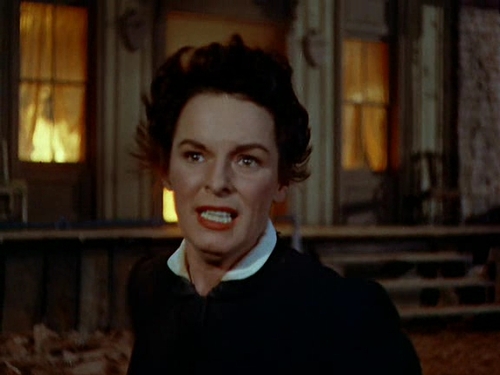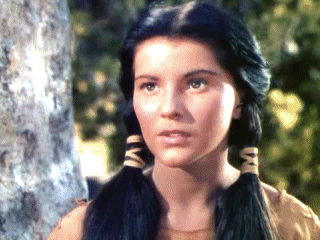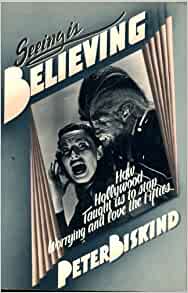
From the Autumn 1984 Film Quarterly. I reviewed this book at Biskind’s request, and my position was hampered by the fact that he was the main editor of American Film at the time, where his commissions were essential to my livelihood. Our relationship became even more strained after I was all set to review the book and he then informed me that he wished I weren’t reviewing it. — J.R.
SEEING IS BELIEVING: How Hollywood Taught Us to Stop Worrying and Love the Fifties By Peter Biskind. New York: Pantheon Books, 1983. $22.95 cloth, $10.95 paper.
The first thing to be said about Peter Biskind’s ambitious and long-awaited study of ideology in Hollywood movies of the fifties is that it can’t be dipped into at random with out a considerable amount of confusion setting in. Without the benefit of Biskind’s careful construction and preparation, the unwary reader who plunges in midstream is bound to be bewildered or dismayed by many of the political labels, whereby Thieves Highway, for instance, is designated as a “right-wing film,” or High Noon and The Blob as “radical films.” Even in the Introduction, which tends to be more cautious than the rest of the book, several eyebrows are likely to be raised by the following sentence: “The films of Robert Aldrich can usually be counted on to be somewhere on the left, just as the films of Elia Kazan are frequently in the middle, while those of John Ford are to the right of his and those of Alfred Hitchcock are to the right of his.“
While nothing in Seeing is Believing quite succeeds in eliminating all the booby-traps contained in the above declaration, the book is a lot more reasoned and reasonable than any sort of scattershot spot-checking might suggest. Examining the period that extends “roughly from Harry Truman’s victory in I948 to the beginning of the Kennedy presidency in I960,” Biskind is mainly concerned with the degree towhich Hollywood movies of this era “reflected not one but several warring ideologies, so that it is possible to speak of radical (left- and right-wing) as well as mainstream films.” Readers of Film Quarterly who have already encountered Biskind’s excellent political dissections of Rebel Without a Cause and On the Waterfront in these pages as early case studies in this enterprise (see the Fall 1974 and Fall 1975 issues, respectively) — both of which have been partially adapted into the present book, shorn of their original polemical contexts but still detailed and persuasive – will be pleased to discover that he is equally sharp about Twelve Angry Men, Them!, The Thing, The Day the Earth Stood Still and Broken Arrow, among other films, and that he has constructed his analyses in relation to an overall system of categories that makes the book’s main argument judicious as well as consistent in relation to its own special terms.
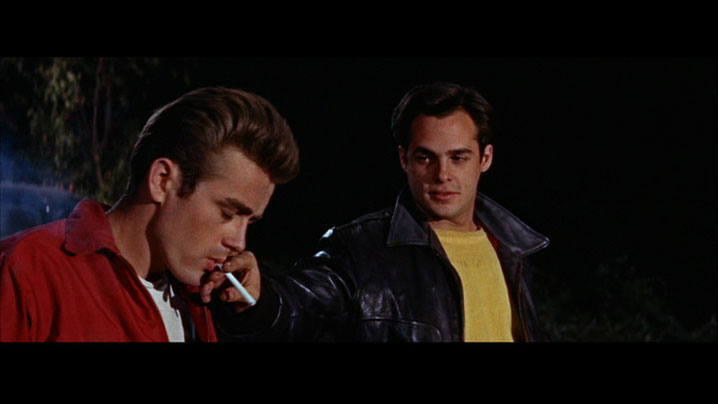
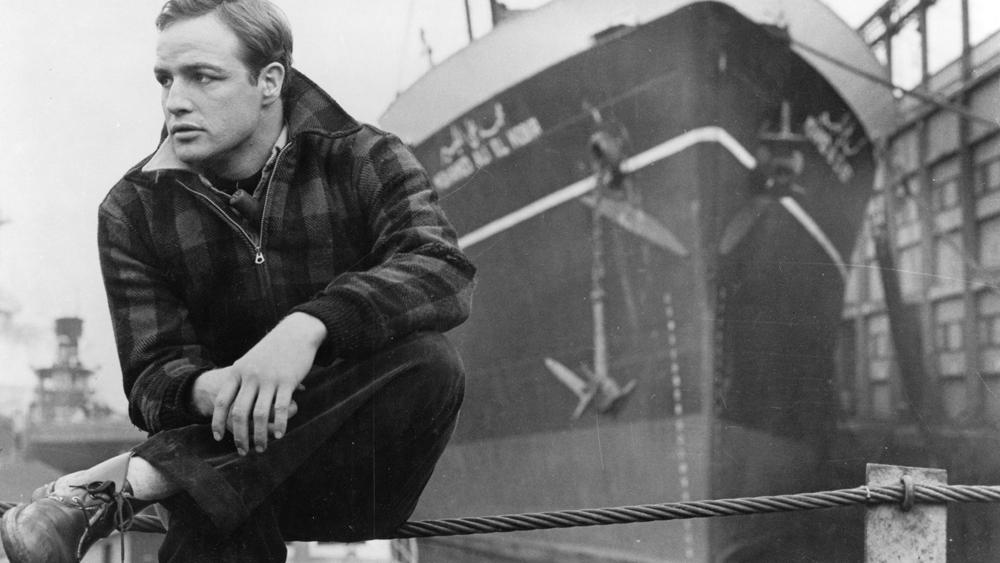
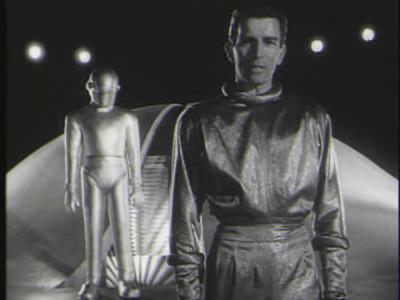
For many readers, however, the greatest problem posed by Biskind’ s book relates to these terms themselves. To establish what he means by fifties ideology in relation to such concepts as consensus, dissent, minorities, sex roles and delinquency, Biskind has depended almost exclusively on Americancommentators of roughly the same period. Thus while neither Marx nor Freud are to be found in bis index, David Reisman gets a dozen citations, Daniel Bell and William H . Whyte, Jr., nine apiece, Arthur Schlesinger, Jr., eight, William F. Buckley, Jr., six, Lionel Trilling and Robert Warshow four apiece, and Eric Fromm three. And because all eight of these latter writers are mainly cited as unmediated authorities rather than as figures who were themselves shaped by fifties ideology, the system that Biskind constructs is by necessity a rather circumscribed one.
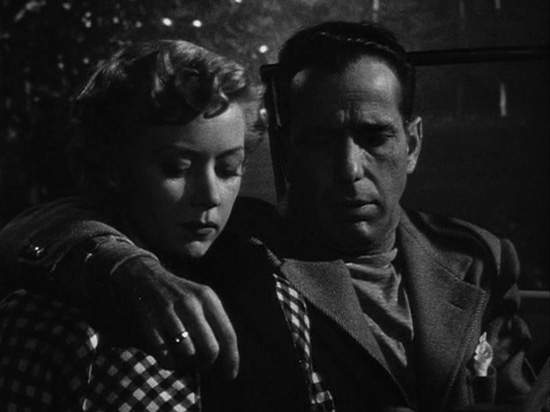
By and large, the emphasis is on plots rather than on aesthetic effects through other means, which leads in certain cases to debatable interpretations. Biskind categorizes Nicholas Ray’s In a Lonely Placeas a conservative film while I view it as liberal-masochistic, and the difference between our interpretations has less to do with storylines than with the ambiguity of the precise role of the Humphrey Bogartfigure in relation to the plot. (A comparable difference of readings cropped up in Biskind’s original treatment of Rebel Without a Cause in Film Quarterly, when he challenged my description of Ray’s Bigger Than Life as “a profoundly upsetting exposure of middle-class aspirations” by treating its hero’s behavior as a cautionary warningrather than as a troubled site for audience identification.) Moregenerally, as social/political commentator who is frequently concerned with issues of consensus, Biskind usually seems all too willing to adopt the values of an aesthetic consensus whereby his own aesthetic standards become indistinguishable from those of the mass audience. When we read that the “resolution of Red River, the shootout that didn’thappen, made good ideology, but a bad ending; it displeased reviewers at the time and has never sound favor with traditionalists,” theimplication seems inescapable that Biskind situates his own aesthetic judgments squarely with the traditionalists and 1948 reviewers.
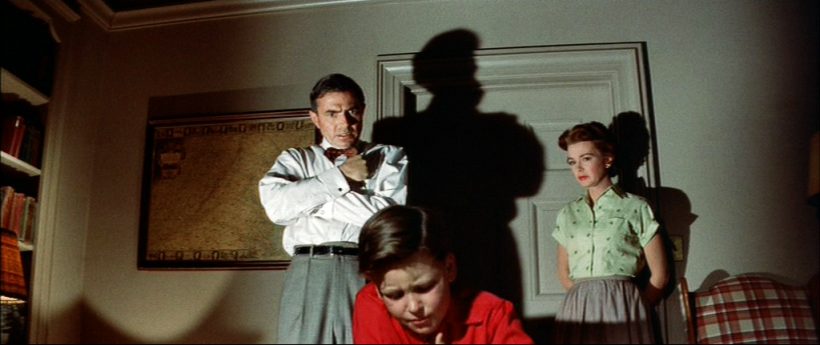
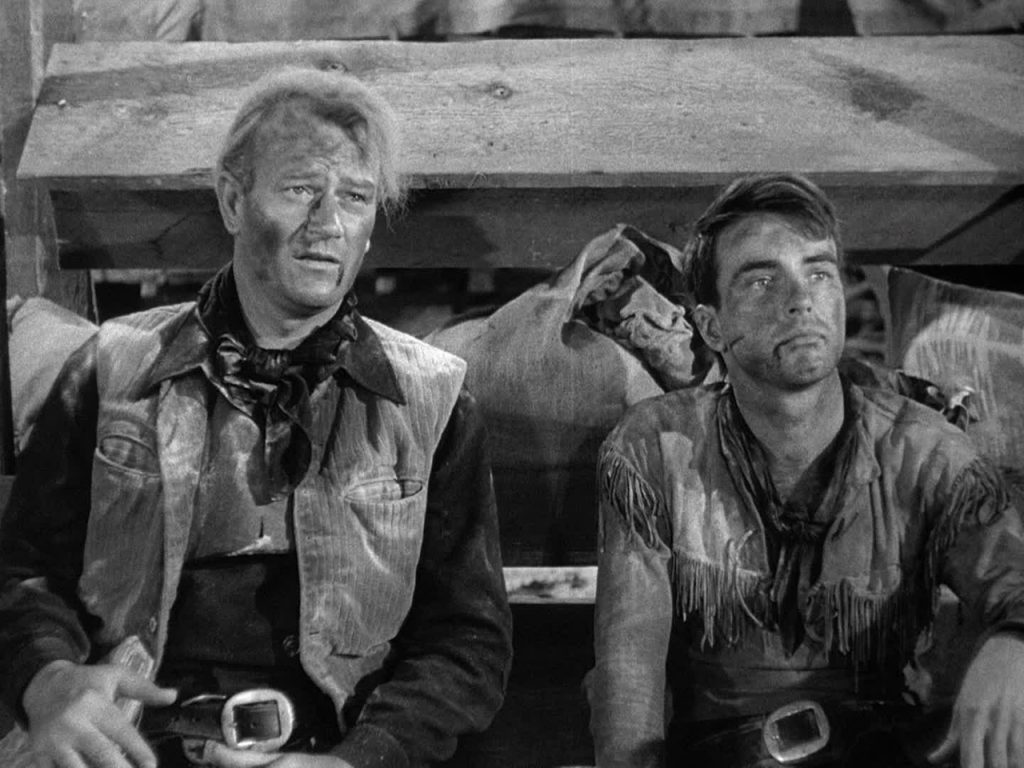
To be fair, however, Biskind is quite capable of making acute aesthetic observations that go well beyond the range of status quo reviewing. (If he weren’t, the very undertaking of this book would be impossible, for however exclusively his focus seems trained on ideology rather than aesthetics, his grasp of the former invariably necessitates a grasp of the latter, whether acknowledged or not.) In his excellent treatment of The Thing, for instance, he gets a lot of interesting mileage out of a match cut from Pat Hendry (Kenneth Tobey) jokily tied up by Nikki Nicholson (Margaret Sheridan) to a block of ice bound by rope: “Inside the ice is the Thing, just as inside Hendry is the id. The ice accidentally melts, and the Thing gets loose, in the same way that Hendry escapes Nikki’s bonds.”
Aiming to be witty as well as precise, Bis kind writes a fluid and readable prose that is marred, to my taste, only by an excessive reliance on familiar catch-phrases to summarize h.is points. The problem with this device is that, through repetition, one is often waiting impatiently for the second shoe to fall (to ven ture a catch-phrase of my own). After estab lishing that “women in centrist sci-fi are either one of the boys or like children” and that Invasion of the Body Snatchers is anti-centrist, he adds that, in the latter film, “it is women and children first.” When “one of Hendry’s men [in The Thing] pokes a revolver in his face, Carrington teams that power grows out of the barrel of a gun.” After the hero’s idyllic domestic situation in The Big Heat is established, we learn that “into every utopia a little rain must fall.” Following the account of a poker game that relates to Lagana, the villain of the same film, we’re told that “Langana’s game is the only game in town.” On the next page, after noting that the hero Bannion “intuitively does the Right Thing,”Biskind can’t resist adding, “In his heart he knows he’s right.” In Blackboard Jungle, “Dadier has the will, but is there a way?”; for Ethan Edwards in The Searchers, Debbie is “better off dead than red.”
Some of these pirouettes have interesting and suggestive points to make — that The Big Heat is pre-Goldwater, that The Searchers is a Cold War film — so they can’t be written off as gratuitous. But the fact that Biskind wheels out these clichés so often tends to trivialize the rhythm of his arguments; the purely formalistic pleasure of an idea clicking into place via a catch-phrase occasionally overpowers the force of the idea itself.
Also regrettable are a few glaring factual errors. Apart from subtracting a “d” from Budd Boetticher’s name and adding a “The” to Cat People (unless these are proofreading errors), Biskind argues that the staggering death-walk of Tolly Devlin (Cliff Robertson) at the end of Fuller’s Underworld USA “was lifted by Godard for the celebratedclose of Breathless,” when a look at the dates of the films makes thisimpossible; even less plausibly, we’re told that Norman Bates appears “in the last shot” of Psycho as his mother, “wig, dress, and all,” which misdescribes that film’s penultimate shots as well. [2020 note: I guess this is partially a matter of interpretation; see below.]

More generally, though, Biskind is quite attentive to the films he describes, and if one questions, say, the status of Mercedes McCambridge as a “proto-lesbian” in Johnny Guitar, or that Angie that Angie Dickinson “is transformed from call girl to housewife” in Rio Bravo, these are more matters of nuance than textual differences. At its best, Seeing is Believing exposes a lot of interesting subtexts to fifties movies. (I was particularly struck by the detailed description of Delmer Daves’s 1950 Broken Arrow, a movie whose treatment of Indians uncannily approximates the treatment of South Sea islanders in Daves’s subsequent film of 1951, Bird of Paradise. Having examined the ideology of the latter film in Moving Places, I was intrigued to discover that however radically different our methodologies might be, Biskind and I have substantially come up with the same analysis.) While the juggling of such terms as ” left-wing” and “right-wing” inevitably backs Biskind into certain corners — s uch as when he labels one of Jim Stark’s choices at the end of Rebel Without a Cause as “the left-, or perhaps right-wing solution” — their cumulative impact and meaning are nevertheless enlightening, and some of the movies described, Rebel included, are not likely to look the same again.- – JONATHAN ROSENBAUM
